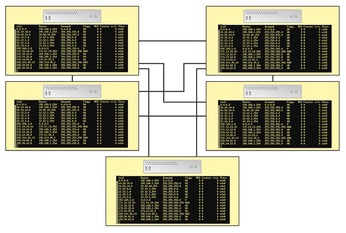Software-defined networking puts an end to patchwork administration
Re-Envisioning the Network

Globalization, rapidly increasing numbers of devices, virtualization, the cloud, and "bring your own device" make classically organized IP networks difficult to plan and manage. Instead of quarreling, some admins address these problems with a radically new approach: Software-defined networking.
Traditional IP networks are made up of a number of autonomous systems: switches, routers, and firewalls. The network devices evaluate incoming data packets by checking their tables and route the packets appropriately. For this to work, these systems need to be familiar with the network topology (Figure 1). The position of a particular device on the network defines its function; a change of position causes complication and reconfiguration.

Over time, the Internet Engineering Task Force (IETF) has given administrators a series of protocols to help spice up the simple control logic. However, these extensions typically address only a specific task and are comparatively isolated. In addition, the growing number of these standards (in conjunction with vendor-specific optimizations and software dependencies) has bloated the complexity of today's network.
[...]
Buy this article as PDF
(incl. VAT)
